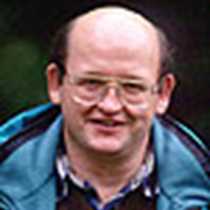Confluence Clearwater and Snake Rivers
Sea Bird anchored by “The Meeting of The Waters” this morning. Here the Clearwater and Snake rivers mingle their waters. The names given on Capt. Clark’s map were Koos Koos Ke and Lewis rivers. The Corps of Discovery camped at this juncture Oct. 10, 1805, three days after leaving Canoe Camp where they made their five dugout canoes under the direction of the Nez Perce.
To the Nez Perce, this place of union for their home rivers is called Tsceminicum. It is denoted by a sculpture of symbolic Mother Earth. She kneels and holds forth her arms. From the palms of her hands living water springs forth to denote the source of the two rivers.
Her long tresses sweep back onto two panels where all the wild animals, birds and fowl of the area are depicted, including the trickster, coyote, who dominates so many Nez Perce legends. Nancy Dreher, a local sculptress, was commissioned by the Corps of Engineers to do this piece when the dikes protecting Lewiston, Idaho, and Clarkston, Wash., were built.
At this junction in the waters, our group split into their chosen groups. One group headed up the Clearwater River with Lin Laughry, local Lewis and Clark historian, for an in depth look at the activities of the expedition in the Nez Pierce country. They walked in the actual steps of Lewis and Clark. We stood at the actual spot where built their canoes, cached the saddles, and started treaty talks with the natives. We saw some of the plants, such a syringa and ocean spray, that were first described to science by Lewis and Clark.
In the meantime, our other group adventured into the wild part of the Snake River, aptly called Hells Canyon. Their transportation was a jet boat that maneuvered whitewater rapids and shallows with ease. Our driver narrated as we traveled. The canyon walls of basalt were magnificent as were the bighorn sheep. They looked at a panel of pictographs by Buffalo Eddy and saw the historic Nez Piece trail. To top it off, the weather was absolutely perfect.
Our lounge “recap” of the day featured our historian discussing the significant political sparring that saved the wild and scenic parts of the canyon from being dammed and turned into giant reservoirs. Our naturalist discussed the idea of commerce between the Indian tribes and the effort by Lewis and Clark to cement relations with the United States as their new trade partner and protector. We can end by saying, “A good day was had by all.”
Sea Bird anchored by “The Meeting of The Waters” this morning. Here the Clearwater and Snake rivers mingle their waters. The names given on Capt. Clark’s map were Koos Koos Ke and Lewis rivers. The Corps of Discovery camped at this juncture Oct. 10, 1805, three days after leaving Canoe Camp where they made their five dugout canoes under the direction of the Nez Perce.
To the Nez Perce, this place of union for their home rivers is called Tsceminicum. It is denoted by a sculpture of symbolic Mother Earth. She kneels and holds forth her arms. From the palms of her hands living water springs forth to denote the source of the two rivers.
Her long tresses sweep back onto two panels where all the wild animals, birds and fowl of the area are depicted, including the trickster, coyote, who dominates so many Nez Perce legends. Nancy Dreher, a local sculptress, was commissioned by the Corps of Engineers to do this piece when the dikes protecting Lewiston, Idaho, and Clarkston, Wash., were built.
At this junction in the waters, our group split into their chosen groups. One group headed up the Clearwater River with Lin Laughry, local Lewis and Clark historian, for an in depth look at the activities of the expedition in the Nez Pierce country. They walked in the actual steps of Lewis and Clark. We stood at the actual spot where built their canoes, cached the saddles, and started treaty talks with the natives. We saw some of the plants, such a syringa and ocean spray, that were first described to science by Lewis and Clark.
In the meantime, our other group adventured into the wild part of the Snake River, aptly called Hells Canyon. Their transportation was a jet boat that maneuvered whitewater rapids and shallows with ease. Our driver narrated as we traveled. The canyon walls of basalt were magnificent as were the bighorn sheep. They looked at a panel of pictographs by Buffalo Eddy and saw the historic Nez Piece trail. To top it off, the weather was absolutely perfect.
Our lounge “recap” of the day featured our historian discussing the significant political sparring that saved the wild and scenic parts of the canyon from being dammed and turned into giant reservoirs. Our naturalist discussed the idea of commerce between the Indian tribes and the effort by Lewis and Clark to cement relations with the United States as their new trade partner and protector. We can end by saying, “A good day was had by all.”




